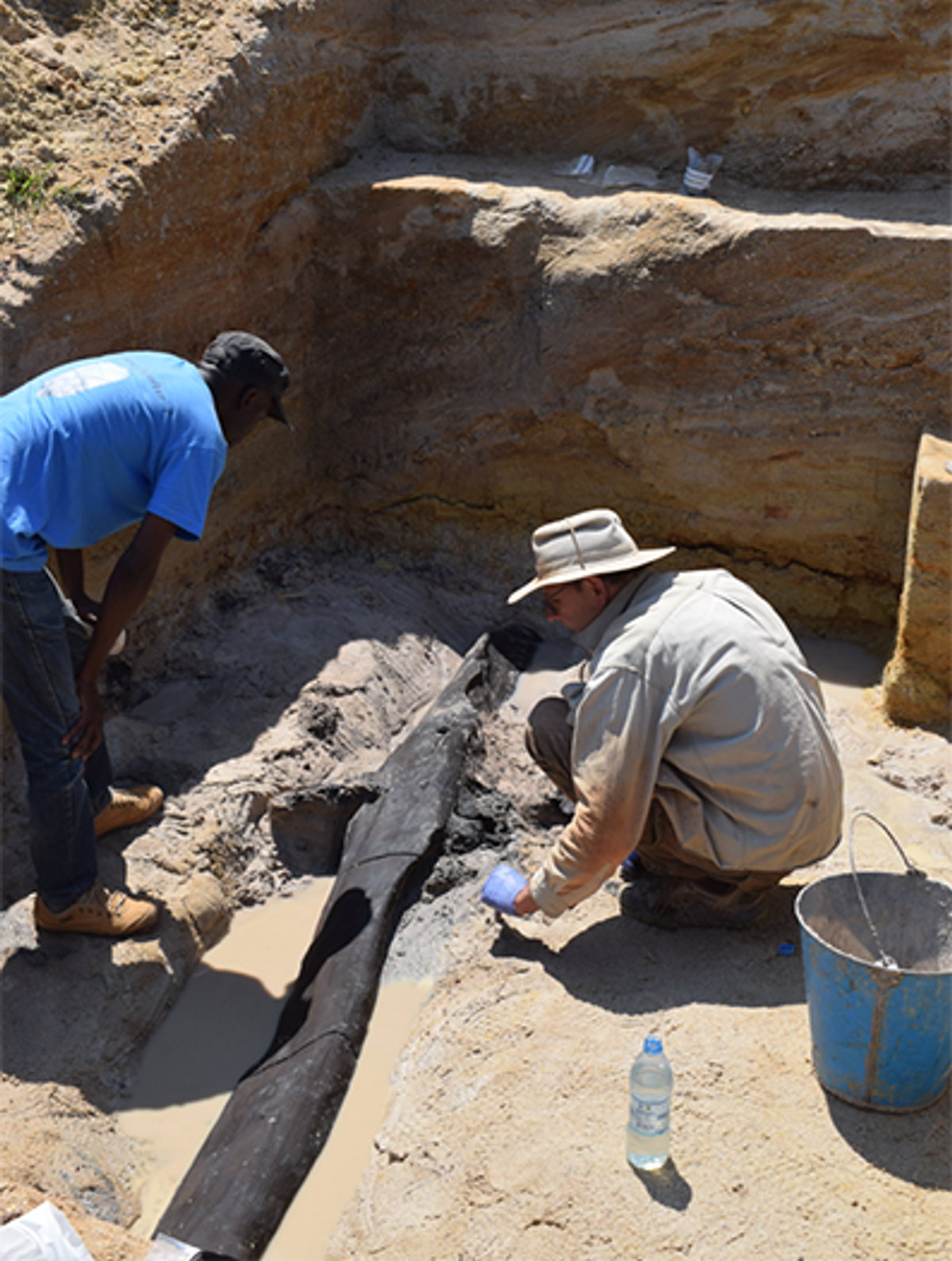The recently found wooden structure: a pair of interlocking logs connected by a notch that date to 476,000 years ago in Zambia raises the possibility that our ancestors were more advanced than previously believed.
:focal(557x398:558x399)/https://tf-cmsv2-smithsonianmag-media.s3.amazonaws.com/filer_public/83/e5/83e5b78a-4415-4259-992f-1b130a2c33c2/3-uncovering-the-wood.png)
Discovered by a team of archaeologists and scientists in central Africa-upstream of Kalambo Falls, near Zambia’s borders with Tanalambo River in Zambia, the construction predates the first appearance of Homo sapiens in Africa. The team from universities and organizations in the UK, Belgium, and Zambia presented evidence that the work was created 476,000 years ago in ‘Nature’ a multidisciplinary science journal published this week. The discovery has brought attention to hominins’ (early cousins of homo sapiens’) behaviors, such as felling trees to manufacture tools for digging and larger constructions.
“This is a disruptive discovery,” Larry Barham, a co-author of the new study and an archaeologist at the University of Liverpool in England, tells Scientific American’s Tom Metcalfe. “I never would have thought that pre-Homo sapiens would have had the capacity to plan something like this.”

Image Courtesy of University of Liverpool.
The find was made after researchers in 2019 slid down a hill to the Kalambo River’s beaches and saw a piece of wood sticking out of a cliff face, according to Nature. “Excavations of the waterlogged site turned up several pieces of wood that seemed to have been modified, as well as one big surprise: a 1.4-metre-long log that had tapered ends and a deeply carved notch where it rested on another large piece of wood.” The notches on the large objects meant they could be stacked perpendicular to one another, thus indicating deliberate design.
To date these objects, the researchers analyzed minerals in the sand that surrounded them through a technique called luminescence dating, Geoff Duller, a co-author of the study and dating expert at Aberystwyth University in Wales, tells the AP. The smaller wooden objects were buried around 390,000 and 324,000 years ago. But the biggest finding was the pair of logs, which had been shaped so they could fit together like Lincoln Logs, the children’s building toys. Barham theorizes the wood could have been part of a platform for fishing or some other raised surface above the muddy ground, according to Nature News.
In a statement, Professor Larry Barham, from the University of Liverpool’s Department of Archaeology, Classics and Egyptology, says to “forget the label Stone Age”. “This find has changed how I think about our early ancestors… they used their intelligence, imagination, and skills to create something they’d never seen before, something that had never previously existed”.

Geoff Duller told CNN that the structure may have been part of a wooden platform used as a walkway, to keep food or firewood dry or perhaps as a base on which to build a dwelling. The structure is clearly man made, he adds, saying: “[…] this is not a natural process — it has been done intentionally using stone tools.”
The wooden pieces were transported from Zambia to the University of Liverpool for analysis between 2019 and 2022. They underwent testing using a method known as luminescence. Currently, the wood samples are undergoing preservation at York Archaeological Trust in the UK. Following this conservation period, they will be sent back to Zambia for further analysis at the Livingstone Museum.


